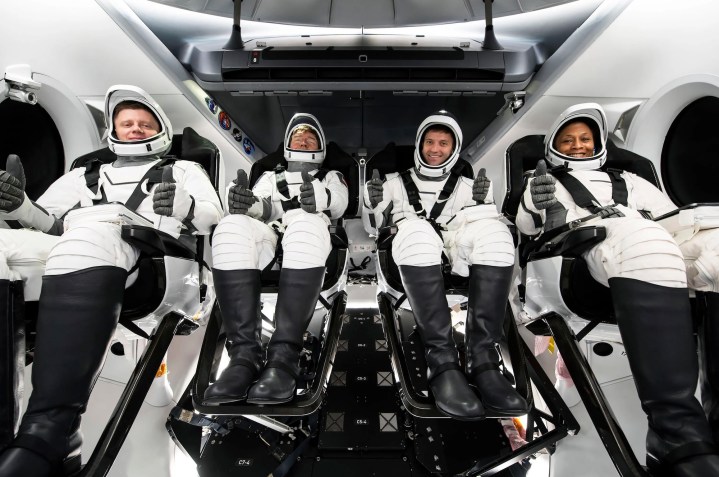UPDATE: NASA and SpaceX had been targeting early Saturday for the Crew 8 launch, but a forecast of strong winds in the ascent corridor prompted the mission team to switch to a new targeted launch time of 10:53 p.m. ET (7:53 p.m. PT) on Sunday, March 3. The article below has been updated to reflect this change.
NASA and SpaceX are making final preparations for Crew-8’s flight to the International Space Station (ISS) in a launch targeted for Sunday night.
The early part of the mission, including the liftoff, return of the first-stage Falcon 9 booster, and stage separation, will be live-streamed by NASA. A live audio feed between Mission Control and the crew aboard the Crew Dragon capsule will also be part of the stream. Read on for full details on how to watch.
The Crew-8 launch will carry NASA astronauts Michael Barratt, Matthew Dominick, and Jeanette Epps, as well as Roscosmos cosmonaut Alexander Grebenkin, to the ISS about 250 miles above Earth. This is Barratt’s third space mission, while the other three are heading to orbit for the first time.
The crew will live and work aboard the orbital outpost for about six months before returning to Earth aboard the same Crew Dragon capsule.
Crew-8 is the eighth crew rotation mission of SpaceX’s human space transportation system — and its ninth flight with astronauts when you include the historic Demo-2 test flight in 2020 — to the space station through NASA’s Commercial Crew Program.

How to watch
NASA and SpaceX are targeting 10:53 p.m. ET (7:53 p.m. PT) on Sunday, March 3 for the Crew-8 launch from the Kennedy Space Center in Florida.
NASA’s live stream of the event is available now. You can watch the coverage using the player embedded at the top of this page or via NASA’s YouTube channel. NASA will also livestream the docking, though precise timings have yet to be released.
Be sure to check SpaceX’s social media feed for any late changes to the schedule that could be caused by technical or weather issues.
Editors' Recommendations
- SpaceX’s Falcon 9 rocket just completed a milestone mission
- SpaceX all set for a record-breaking rocket launch on Friday
- SpaceX shares stunning night shot of its Super Heavy booster
- Crewed Soyuz launch to space station suffers rare late abort
- SpaceX already has a date in mind for next Starship launch


